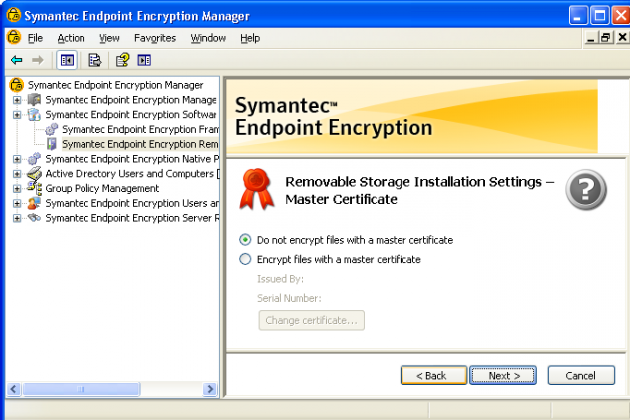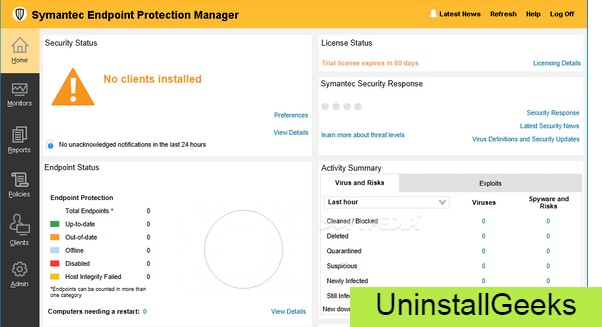

To remove Symantec consumer products under the Norton brand, run the Norton Remove and Reinstall tool. Symantec Cleanwipe Removal Tool will remove security software installations of the Symantec enterprise product line, such as Symantec Endpoint Protection. I assume you have done this: Open the Settings App (gear icon on your Start Button) Go to Apps Scroll down to find Symantec Endpoint Protection Click that and choose Uninstall If that does not work, click the link below for Symantec's instructions on how to uninstall Symantec Endpoint Protection. It is not recommended to use CleanWipe the first time you have uninstallation issues. But if this method fails, you can use the CleanWipe utility. You should always attempt to uninstall the Symantec Endpoint Protection product components through the Windows Control Panel first. This removal tool additionally provides an option for uninstalling Windows LiveUpdates but should only be used if you are experiencing issues with LiveUpdates. Here is a selection:įor more information visit The XLab FAQs and read the FAQ on removing software.Symantec Cleanwipe Removal Tool allows for the removal of Symantec Endpoint Protection product components when all other methods fail. There are many utilities that can uninstall applications. Be sure you also delete this item as some programs use it to determine if it's already installed. The item generally has a ".pkg" extension. Usually with the same name as the program or the developer. Some applications install a receipt in the /Library/Receipts/ folder. Look for them in /Library/LaunchAgents/ and /Library/LaunchDaemons/ or in /Home/Library/LaunchAgents/. Yes, to access OneWire from a personal device you must enroll in Symantec VIP for 2 Step.

If you cannot find the uninstaller then you could download the freeware, Easy Find, to locate files that need to be removed. Some applications may install an uninstaller program that can be used to remove the application.

If you want you can look for them at the above location and delete them, too. Although they do nothing once you delete the associated application, they do take up some disk space. Applications may create preference files that are stored in the /Home/Library/Preferences/ folder.

Most OS X applications are completely self-contained "packages" that can be uninstalled by simply dragging the application to the Trash. Go to Symantec's website where you can find uninstallers for their software.


 0 kommentar(er)
0 kommentar(er)
